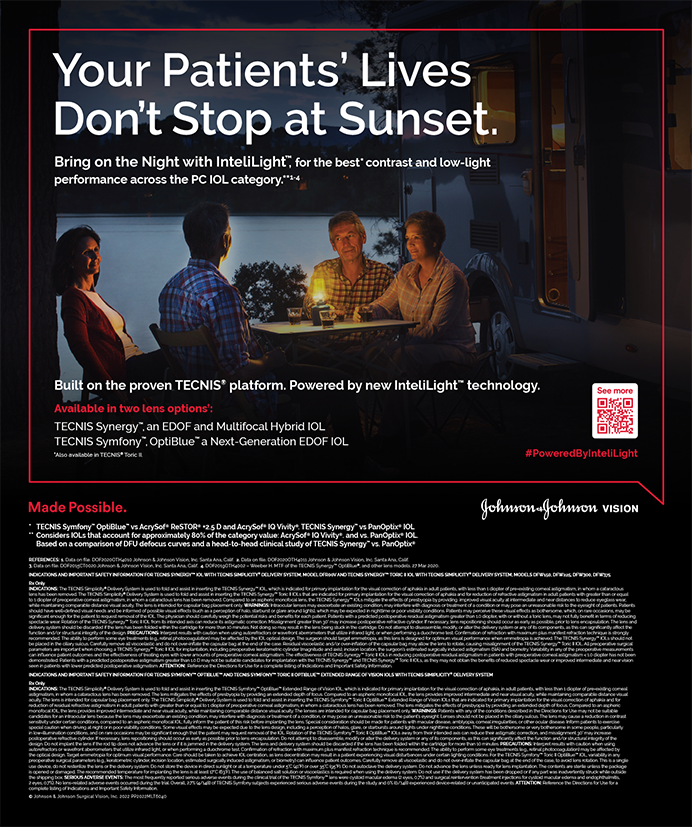After the FDA approved the iStent Trabecular Micro-Bypass Stent (Glaukos) in 2012, I began a study with my colleagues to evaluate the safety and effectiveness of the device in patients with open-angle glaucoma and a cataract.
Our prospective review included 168 consecutive eyes (patients’ mean age, 72 years) with open-angle glaucoma and a cataract. The data we collected included IOP, number of medications, and visual acuity. We monitored IOP for spikes over 15 mm Hg.
My surgical approach is standard. I do not use acetylcholine (Miochol-E; Bausch + Lomb) or carbachol intraocular solution (Miostat; Alcon). In my experience, the device slides easily into the trabecular meshwork, after which I nudge the stent into position. Postoperatively, my patients use steroids and nonsteroidal antiinflammatory drugs for 1 month and antibiotics for 1 week. I stop glaucoma medications 1 week after surgery if the IOP is stable. If the IOP is not in an acceptable range, patients continue using glaucoma medications until their pressure stabilizes.
In the study, the mean preoperative IOP was 18.5 mm Hg. Six months postoperatively, the mean IOP was 14 mm Hg, and the average number of glaucoma medications had decreased from 1.7 to 0.8.
Pressure spikes greater than 15 mm Hg occurred in 20 eyes (12%) at different time points. Most IOP spikes happened on the first postoperative day and then again at the 1-week and 1-month visits. One patient required implantation of an Ahmed Glaucoma Valve (New World Medical).
Based on these results, I believe that combining implantation of the iStent with cataract surgery to be safe and effective, and I expect to achieve a mean reduction in IOP of about 4 mm Hg and to decrease the number of glaucoma medications a patient needs by approximately 50%. I am considering instilling a miotic agent at the time of surgery to see if it reduces the incidence or severity of IOP spikes on the first postoperative day.
John P. Berdahl, MD, is a clinician and researcher with Vance Thompson Vision in Sioux Falls, South Dakota. He is a consultant to Alcon, Bausch + Lomb, and Glaukos. Dr. Berdahl may be reached at johnberdahl@gmail.com.


